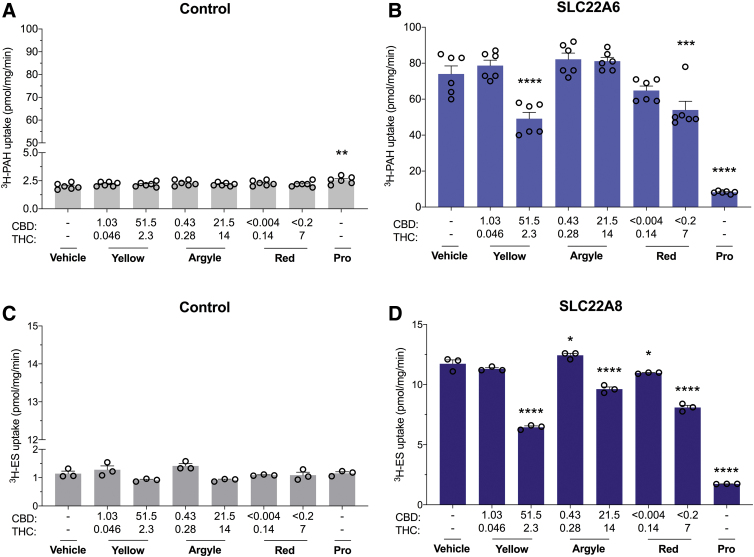FIG. 5.
High concentrations of Spectrum Yellow and Spectrum Red cannabis-based products modestly inhibit SLC22A6 but not SLC22A8. Cells expressing human organic anion transporters were used to screen the inhibitory potential of three cannabis-based products. Average uptake of 3H-PAH (10 μM) into cells (A) transfected with control vector or (B) expressing SLC22A6 was quantified by liquid scintillation counting. Spectrum Yellow (Yellow), Tweed Argyle (Argyle), and Spectrum Red (Red) cannabis-based products were applied with final CBD and THC concentrations (μM) depicted (Pro, 100 μM). High doses of both Spectrum Yellow and Spectrum Red weakly inhibited SLC22A6 transport (***p<0.001, ****p<0.0001 compared with vehicle; one-way ANOVA followed by Dunnett's post hoc). Error bars represent SEM, with n=6 per group. Average uptake of 3H-ES (1 μM) into cells (C) transfected with control vector or (D) expressing SLC22A8 was quantified by liquid scintillation counting (Pro, 100 μM). High concentrations of cannabis oils modestly inhibited SLC22A8 transport (*p<0.05, ****p<0.0001 compared with vehicle; one-way ANOVA followed by Dunnett's post hoc). Error bars represent SEM, with n=3 per group. Pro, probenecid; PAH, p-aminohippuric acid.

